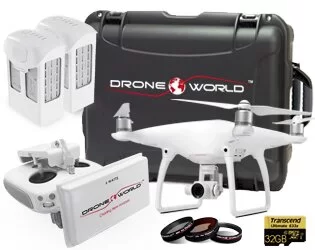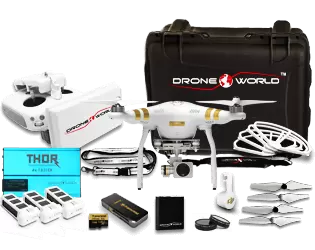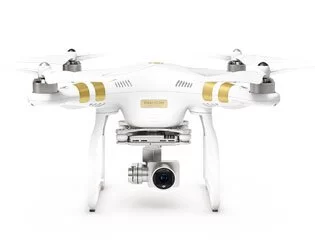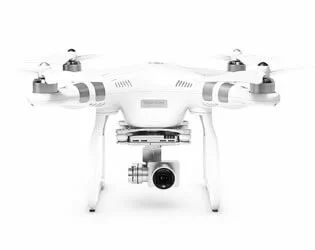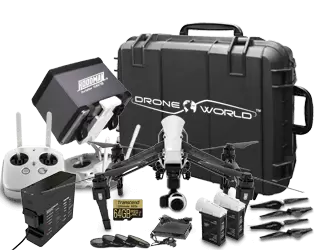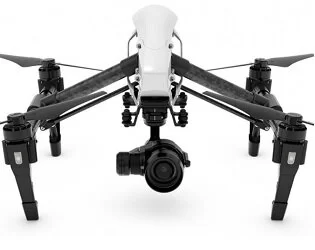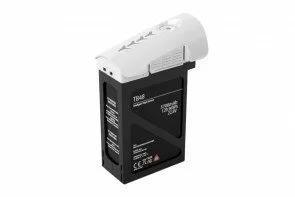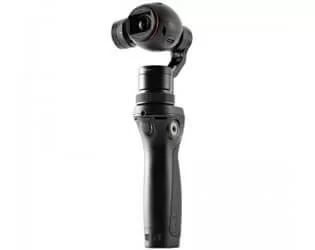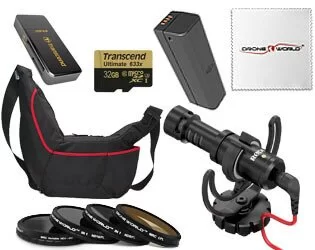GoPro Karma Rumors
Updated May 2016
Ever since CEO Nick Woodman announced his company would enter the drone market, business and tech media have been fascinated by the idea of a GoPro drone. Nicknamed "Karma," the media have hyped the upcoming aircraft to almost messianic levels. And for good reason: GoPro defined the action cam and dominated the market in just a few years, accounting for over 80% of the action cams sold. No matter which way you look at it, the GoPro Karma is a big deal to a lot of people.
Just what do we know about the Karma and business around it? Let's find out.
Investors Rejoice!
Sales for consumer drones soared almost nine times over between 2013 to 2015. Analysts project over an 80% hike in sales for 2016 alone, jumping from a half-billion to almost a full billion units. Consumer drones are affordable, ranging between $500 and $2,000, and getting easier to use. Da-Jiang Innovations (DJI) of China is the largest manufacturer of consumer drones, building seven out of every ten consumer drones sold. The Federal Aviation Administration (FAA) reported about 300,000 registrations for consumer drones in one month. Put another way: That’s over 400 registrations per hour.
The drone isn’t just for pro videographers anymore. Athletes, travelers, and all sorts of enthusiasts now pilot drones. The drone’s terrific range and altitude give amateur pilots and career videographers alike incredible footage. That’s a ripe market for GoPro to enter.
And enter it must. GoPro suffered in 2015 because of troubled product launches. Investment analysts see the the Karma as a chance to rejuvenate the GoPro brand, expand the drone market, and maybe even redefine it. If so, expect to see the GoPro IPO soar.
Target: Phantom
The DJI Phantom Series is the standard in consumer drones. This little quadcopter is the best-selling and -reviewed consumer and prosumer drone on sale today. DJI offers the Phantom 3 in four variants, each mounted with a non-detachable camera (ranging from 2.7K to 4K resolution), a three-axis gimbal, and a remote. Advanced and Professional models sport GPS and GLONASS tracking, HD “Lightbridge” streaming, and indoor positioning. Prices range from $400 to $1,000, making the Phantom 3 an awesome value.
The Phantom 4 has only made the standards higher. Launched in March, the Phantom 4 offers advanced obstacle-avoidance technology, wider range, and even greater performance, hitting a top speed of 45 MPH. The Phantom 4's many "smart features" led The Verge to declare it "the first drone for everyone."
How will the GoPro Karma stack to DJI’s compact phenom?

Quad Design
Many bloggers have speculated that the GoPro Karma will resemble the Hexo+ (or “Hexo Plus”), a French hexacopter drone compatible with GoPro cameras. This speculation may be because of a rumor that the Hexo+ team sought a buyout from GoPro. GoPro has said nothing about using the Hexo+ or hexacopter design.
A quadcopter design with detachable fixed or foldable (but not retractable) landing gear is likelier. This design is proven to be simple, economical, and durable. After all, fewer moving parts mean fewer things that can go wrong. The Karma will have to be all these things to keep in line with GoPro cameras’ reputation.
Detachable Camera
Judging from GoPro’s own video, the Karma’s camera and gimbal display incredible dynamic movement. (Look 12 seconds in.) That dynamic movement supports the view that the Karma’s camera has 360° range--making the drone the first and only one to panoramaically paint a motion picture," setting scenes before and after the action. The Karma won’t include a camera, though GoPro will offer bundles with the Hero 4. No prepackaged camera keeps cost down and gives pilot-videographers leeway in their choice of hardware. (Are you listening, DJI?)
Don’t fret about potential compatibility issues. GoPro CEO Nick Woodman emphasized the importance of backward compatibility, telling Engadget: "We make everything backwards compatible, our goal is that your older GoPro will work with anything new we make, and vice versa."
Performance
GoPro loves performance, so expect the Karma to yield specs similar or better than the Phantom 3’s 35 MPH top speed and 25 min. max flight time. Rumor has it that GoPro will unveil a smaller, lighter, and more powerful battery to be seen on the Hero 5. That advanced battery technology will surely find its way into the Karma.
GoPro may maneuver around battling DJI spec-vs-spec with a tangent: superior “follow-me” tech. Indie-wonder AirDog showed just how well an “auto-follow” drone can perform. And DJI is looking to up the ante on drone autonomy with its next-gen Phantom. Some industry insiders are claiming a 30+ MPH follow speed. If true, the Karma will be a step toward truly autonomous drone tech.
Release
So when are we going to see the Karma? GoPro’s been hazy on the subject. The Motley Fool’s Leo Sun thought GoPro would release it in May. PC Advisor's Jim Martin suggested June. Then came word from Fortune Magazine that GoPro postponed the Karma even further. Actual date? TBD, though Fortune predicts late this year.
So will the Karma be a game-changer? That's to be seen. One thing that is certain: We’ll see countless GoPro Karma vs Phantom 4 comparisons very, very soon.
In the meantime, keep up to date with the latest drone sales and news at Drone World. And click here to see our latest offers on the DJI Phantom Series, the world’s No. 1 consumer drone.
.

